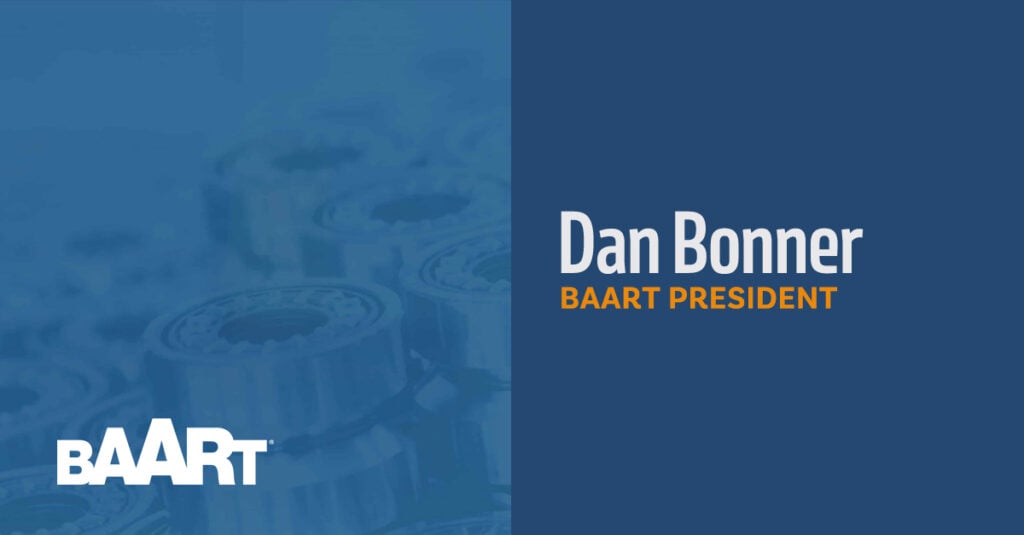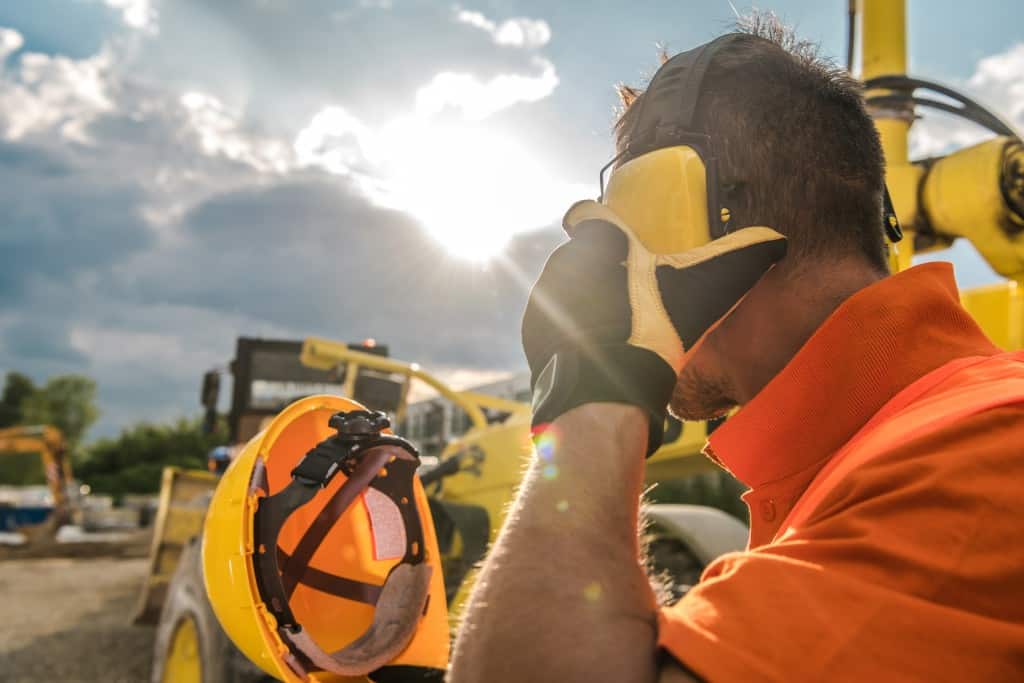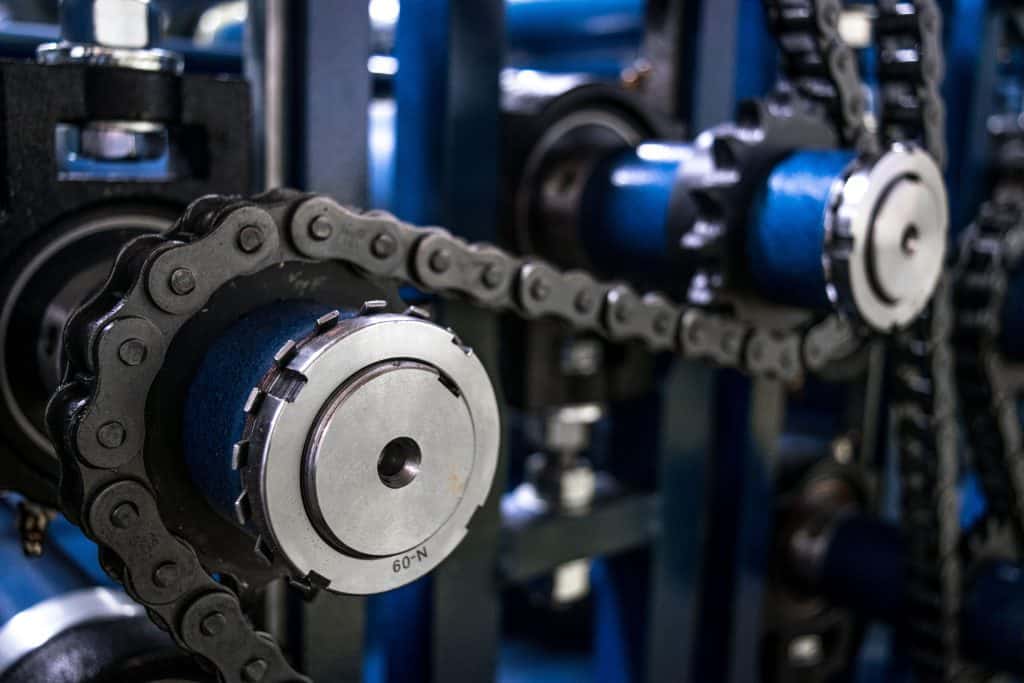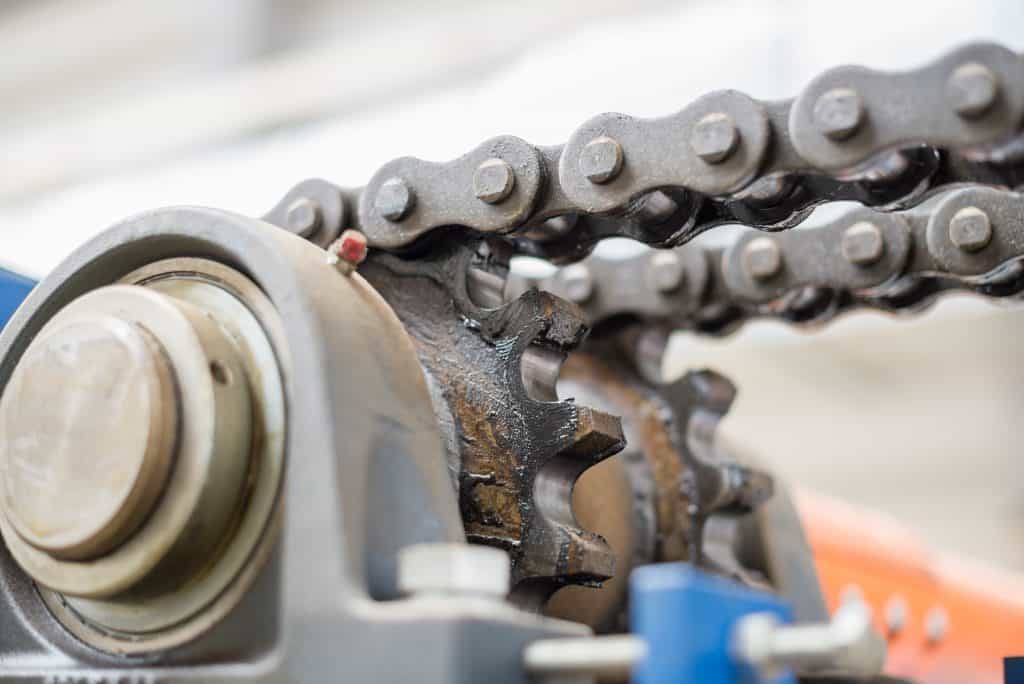Roller Chain Clinging to Sprockets? Causes and Solutions

When a chain clings or binds to a sprocket, this not only can slow down your operation as you look for a solution but can also damage the chain, sprockets, and other parts of your application. With roller chain clinging to sprockets, it’s time to look for a resolution.
There are a handful of reasons for roller chain clinging to sprockets. It may have difficulty articulating – not being able to bend easily around the chain joints. The chain may be experiencing excessive chain loads. The sprocket may be damaged. When you are experiencing this issue, it is important to consider each of these possibilities.
We recommend beginning by inspecting the sprocket and chain for visible damage. This will give you a clue as to the root cause of the issue and how to fix it. From there, we suggest you consider other reasons your chain might cling to the sprockets during operation.
Are components worn?
If either the sprocket or chain appears damaged, it’s clearly time for a replacement part. But we recommend you don’t stop there, but continue to investigate and determine why your parts are damaged. Some damage is inevitable over time, but if your parts are wearing out quickly, a little more digging is in order. You’ll want to correct issues to keep your system running smoothly over time.
Some examples of apparent damage: worn sprockets, pin or bushing damage which presents as elongation, and bent side plates. If the side plates are bent, the chain may have trouble articulating and as a result, may not freely engage and disengage from the sprocket during operation. Likewise, if the sprockets are in poor shape, the sprocket-chain dynamic can become unworkable. (We’ll cover that in greater length below.)
Lubrication, lubrication, lubrication
Once you’ve ruled out visible damage and replaced any worn out parts, lubrication is an obvious next step. Proper lubrication is paramount to a well-functioning chain drive for several reasons, including the mitigation of chain cling.
Frozen or seized chain will cling. Chain with any level of corrosion can cling. When moving parts are rusted or corroded, they become resistant to movement. This hurts efficiency, of course, but more importantly, it also causes premature wear in all your components. Fortunately, both of these problems can be virtually eliminated with good lubrication.
When lubricating your chain drive, avoid heavy or tacky greases. These do not penetrate the chain and get to the critical interior pin and bushing surfaces, as they are too thick. They also tend to accumulate contaminants that can hasten wear and possibly create binding. Heavy greases can make it harder for your roller chain to wrap around the sprockets and work as it should. Stick to light oil and a comprehensive lubrication system that is appropriate for the speed of your chain. And of course, keep up with a regular maintenance schedule.
When was your chain last cleaned?
Maintenance is essential for an efficient system. If your roller chain isn’t well oiled or cleaned regularly, it can seize up or cling to your sprockets. Your drive operates in environments that aren’t always the cleanest. Sawdust, plastic shavings, metal shavings, or dirt can easily get into the internal gaps or internal clearances of your chain, such as between rollers and bushings and bushings and pins. Over time these particles are wedged further and further in, making it difficult for the chain to move.
Lubricants can mitigate this, but further care, such as cleaning and prevention, is also needed. Keeping the area where the chain operates as clean as possible and using chain guards to cut down on contamination getting to the chain can make a big difference.
How’s your alignment?

Both axial and angular alignment are crucial for proper roller chain function. When things are out of alignment, your chain will wear prematurely and move excessively. If the sprockets are not aligned within tolerance, there are unintended forces on the components of the roller chain. These forces will make it increasingly difficult for the chain to bend and wrap around the sprockets. The chain may even break, causing catastrophic failure of your system.

Usually, only the sprocket and roller interact, but if the chain drive is out of alignment, your chain will move off-center. The sprocket teeth will be in contact with the side plates instead of just the roller. This pressure will force the sprocket to carry the chain during rotation, rather than let it roll off.
Pay careful attention to your sprocket alignment during installation, and check it if you suspect it’s out of alignment. Using a laser level or even a straight edge in a pinch, make sure the shafts are level, and the sprockets are parallel. Be sure to check in multiple places for accuracy.


Are things off-center?
Every roller chain has a certain amount of slack in it. As it elongates, that slack will increase until it’s too much, necessitating replacement of the chain. If your center distance is too large, there is also a high possibility of creating too much slack in your chain drive. A sprocket idler can remedy this.
Without the proper tension levels, the sprocket teeth will have difficulty guiding the chain. It will stray from the conventional route and wear unevenly. The timing between your small and large sprockets can even become disrupted. When this happens, the chain will have difficulty correctly engaging the sprockets.
Like alignment, this is something you should pay attention to during installation and correct if you suspect there is a problem. Otherwise, the chain will continue to feed incorrectly, and there will be excessive wear and damage to the roller chain and sprockets.
Worn out teeth

Like anything else, sprocket teeth wear and reach a point when they are no longer functional. Under normal conditions, a roller will engage with three points on any given sprocket. First, the roller will fall into place between the sprocket teeth (A.) Next, the sprocket and roller work together to transmit power (B). Finally, as the roller leaves the sprocket, the teeth guide the roller, but can’t transmit tension (C).

As sprocket teeth wear, they become hooked, and the roller is unable to move smoothly through the sprocket. The teeth engage the chain longer than they should, dragging the chain past where it would typically disengage. Essentially, the sprocket hooks the chain, holding on to the chain longer than necessary and slowing it down. Once a sprocket reaches this point, it needs replacing.
There are several fixable causes for roller chain clinging to sprockets. Worn components are the most common cause, requiring replacement. Proper installation and maintenance are significant mitigating factors. It can be as simple as finding the root cause hiding in plain sight and addressing it.




